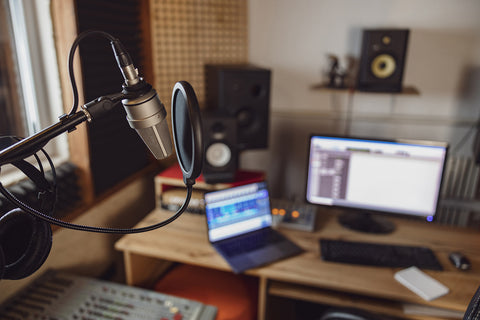What Is the Importance of Monitor Placement in a Home Studio?
What Is the Importance of Monitor Placement in a Home Studio?
Optimizing Sound Quality Through Strategic Monitor Positioning
In a home studio, the placement of monitors plays a crucial role in the accuracy and quality of your sound. As an audio technician, understanding how to position your monitors effectively is a key step in creating a reliable and functional workspace. This guide dives into the importance of monitor placement and offers practical tips for achieving the best sound in your home studio.
Introduction: Setting the Stage for Optimal Sound
The journey to optimal sound in a home studio starts with understanding the fundamentals of monitor placement. This critical aspect can significantly impact your mixing and recording process.
1. The Basics of Monitor Placement
Understanding Sound Wave Behavior
Learn how sound waves behave in a room and how this knowledge is essential for positioning monitors correctly.
Principles of Stereo Imaging
Discover the concept of stereo imaging and how proper monitor placement contributes to a balanced and accurate soundstage.
2. The Role of Room Acoustics
Interactions with Room Acoustics
Understand how monitors interact with room acoustics and the impact this has on sound quality.
Using Acoustic Panels for Improved Clarity
Explore how acoustic panels can be utilized to enhance the sound quality by minimizing unwanted reflections and standing waves in your studio.
3. Monitor Positioning Techniques
The Ideal Monitor Placement
Learn about the ideal placement of monitors in relation to your listening position, including height, angle, and distance.
Dealing with Space Limitations
Find out how to overcome common space limitations in home studios, ensuring optimal monitor placement even in smaller rooms.
4. Advanced Monitor Placement Strategies
Room Symmetry and Monitor Placement
Understand the importance of symmetrical placement in relation to the room's geometry for balanced sound distribution.
Utilizing Measurement Tools
Learn how to use measurement tools to precisely position your monitors and analyze their impact on room acoustics.
5. Troubleshooting Common Issues
Identifying and Solving Common Placement Issues
Discover how to identify and solve common issues such as bass buildup, phase cancellation, and uneven frequency response.
Regular Reassessment and Adjustment
Understand the need for regular reassessment and adjustment of your monitor placement to maintain optimal sound quality.
6. Conclusion: Mastering Your Monitoring Environment
In conclusion, mastering monitor placement is a vital skill for any home studio owner or audio technician. By applying the principles outlined in this guide, you can ensure your monitoring environment is conducive to producing high-quality, accurate sound.
ABOUT AUTHOR
House Live Engineer of Free Bird, a live house with the history of South Korea's indie music scene.
Single album/Regular album/Live recording, Mixing and Mastering experience of various rock and jazz musicians


















